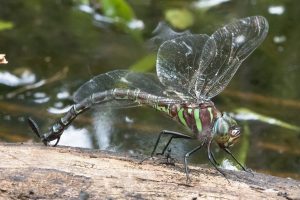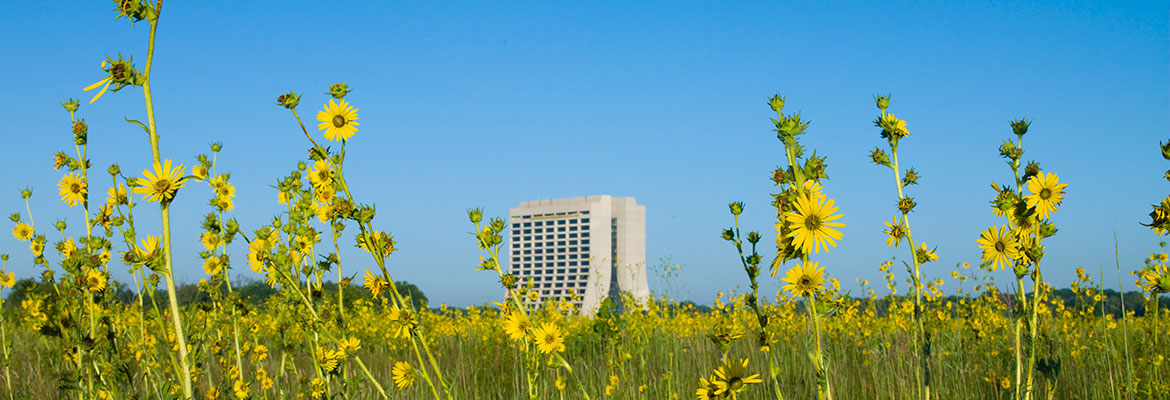
Wetlands provide valuable functions within the landscape as well as habitat for fish and wildlife. Here, a female swamp darner (Epiaeschna heros) oviposits in a wetland in Morgan’s Woods. Photo: M. Donnelly
Dragonflies and damselflies have grown in popularity in recent years. They are thrilling to watch, brightly colored and acrobatic, and are also indicators of habitat quality. The flashy adults we see are the last, brief stage of a much longer life cycle that takes place mostly under water, in ponds, lakes, streams, rivers, wetlands – nearly any permanent or semi-permanent body of water. Because of Fermilab’s diverse habitats, and also the lab’s maintenance of large supplies of cooling waters, dragonflies and damselflies thrive here. Fifty-eight species have been observed, including most of those common to the Chicago area as well as several species rarely reported in the metropolitan area. The links below include an introductory video (10 min), the list of species observed, and a photographic field guide.
- Video: An 10-minute introduction to the dragonflies and damselflies
- Complete list: Dragonflies and damselflies reported in Fermilab
- Gallery: Photographs of the species recorded in Fermilab.
- Resources: Books and web sites about dragonflies and damselflies
- Field Trip: Species seen near the Lederman Science Center.
The Field Trip, “Dflies near the LSC”, is designed to work well on smartphones. It is a photographic record of the species that have been seen in the public areas near the Lederman Science Center. Different species are present at different times of year, and some individuals are difficult to identify, especially the females, which are not shown. To access it on your phone Google “fermilab ecology,” then navigate from the top hit to wildlife, then to dragonflies. A PDF version is also available.
The gallery is also designed to work on smartphones. It presents photographs of all the species that have been observed at Fermilab to date, organized by taxonomy and with links to detailed information about each species.

